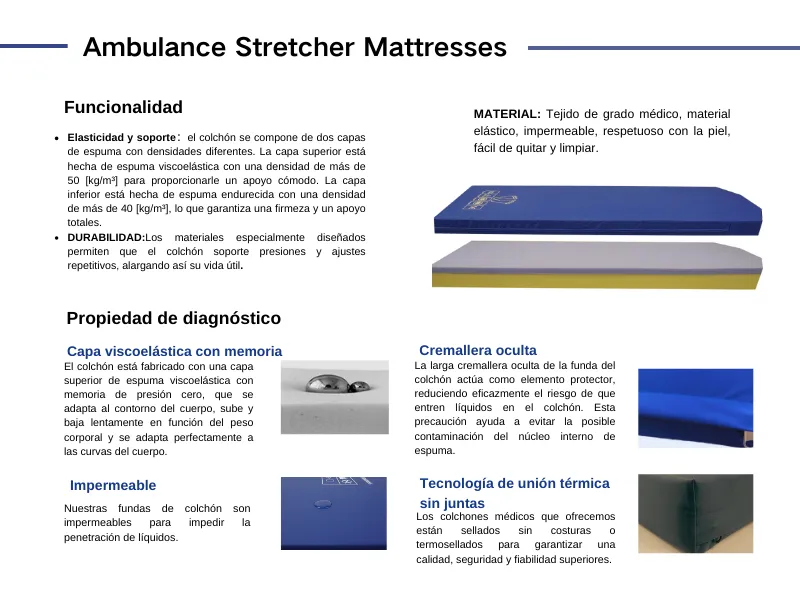Guidelines for Selecting Top Pressure Sore Prevention Mattress Manufacturers
Pressure Sore Prevention Mattress Manufacturers Innovating Comfort and Care
In the realm of healthcare, the importance of preventing pressure sores cannot be overstated. Pressure sores, also known as bedsores or ulcers, occur when prolonged pressure on the skin reduces blood flow to the area, leading to tissue damage. High-risk patients, such as those with limited mobility or certain medical conditions, require specialized interventions to minimize this risk. One such intervention is the use of pressure sore prevention mattresses, and a growing number of manufacturers are stepping up to meet this crucial need.
Understanding Pressure Sores
Pressure sores typically develop over bony areas of the body, such as the heels, elbows, hips, and tailbone. They can cause significant pain, lead to serious infections, and significantly hinder recovery and quality of life. To combat this issue, healthcare providers adopt a multifaceted approach, including regular repositioning of patients, nutritional support, and the use of advanced mattress technologies designed to redistribute pressure and enhance comfort.
The Role of Pressure Sore Prevention Mattresses
Pressure sore prevention mattresses are specifically designed to relieve pressure points and improve circulation, thereby reducing the risk of ulcers. These mattresses utilize varying materials and technologies, including foam, gel, and air-filled systems, to adapt to the body’s contour while distributing weight evenly. Manufacturers are continually innovating to produce products that enhance patient comfort while addressing the specific needs of healthcare facilities and home care settings.
Key Features of Modern Pressure Sore Prevention Mattresses
1. Technological Advancements Many manufacturers are incorporating advanced technologies into their products, such as alternating pressure systems, which periodically inflate and deflate air chambers within the mattress. This action helps to shift pressure away from vulnerable areas, promoting better blood flow and reducing the likelihood of sores.
2. Material Composition High-quality foam mattresses often include memory foam or viscoelastic materials that conform to the body’s shape, providing personalized support. Others may combine gel layers to further enhance comfort and cooling effects, reducing the discomfort associated with prolonged sitting or lying down.
pressure sore prevention mattress manufacturer

3. Breathability Effective ventilation is crucial for maintaining skin integrity. Breathable materials not only regulate temperature but also help wick away moisture, which is integral in preventing maceration—a condition that can exacerbate skin breakdown.
4. Ease of Use and Maintenance Many modern pressure sore prevention mattresses are designed for easy installation and maintenance. Waterproof covers are common, offering protection against spills and bodily fluids while being easy to clean and disinfect.
5. Monitoring Capabilities Some innovative models come equipped with built-in sensors that monitor pressure levels, body position, and even skin condition. These data-driven insights can aid caregivers in making informed decisions regarding patient repositioning and mattress adjustments.
Top Manufacturers in the Market
Several companies have become notable players in the pressure sore prevention mattress market. They include well-known brands such as Invacare, Drive DeVilbiss Healthcare, and Hill-Rom, each offering a range of products tailored for different patient needs and healthcare settings. These manufacturers are committed to research and development, ensuring their products adhere to the highest standards of safety and efficacy.
The Future of Pressure Sore Prevention
As the population ages and the prevalence of chronic illnesses rises, the demand for effective pressure sore prevention solutions is expected to grow. Manufacturers are likely to continue focusing on innovation, sustainability, and affordability in their product offerings. The integration of smart technologies and advanced materials will pave the way for smarter, more responsive mattresses that deliver optimal care for vulnerable populations.
Conclusion
The fight against pressure sores is an ongoing challenge that necessitates a combination of vigilance and advanced technology. Pressure sore prevention mattress manufacturers play a critical role in this battle by developing solutions that enhance patient care and comfort. As these products continue to evolve, they offer hope for improved outcomes for patients at risk, ultimately contributing to better quality of life and recovery experiences in healthcare environments. Investing in quality pressure sore prevention mattresses is not just a practical choice but a compassionate commitment to patient care.
-
The Effect of Coconut Foam Mattress Breathability and Humidity Regulation on Improving Sleep QualityNewsJul.03,2025
-
How Wave Mattress Systems Improve Blood Circulation During ImmobilityNewsJul.03,2025
-
The Climate-Adaptive Sleep Revolution: Exploring the Benefits of Cooling Gel Memory Foam MattressesNewsJul.03,2025
-
Exploration of the Role of Coconut Foam Mattress in Preventing Bedsores in the ElderlyNewsJul.03,2025
-
Comparing Wave Mattress and Air Mattress: Which Is Better for Medical Use?NewsJul.03,2025
-
Analysis of Comfort and Environmental Performance of Natural Latex and Coconut Foam MattressNewsJul.03,2025
-
Multi-Layer Construction for Enhanced Performance in Gel Mattress PadNewsJun.24,2025

